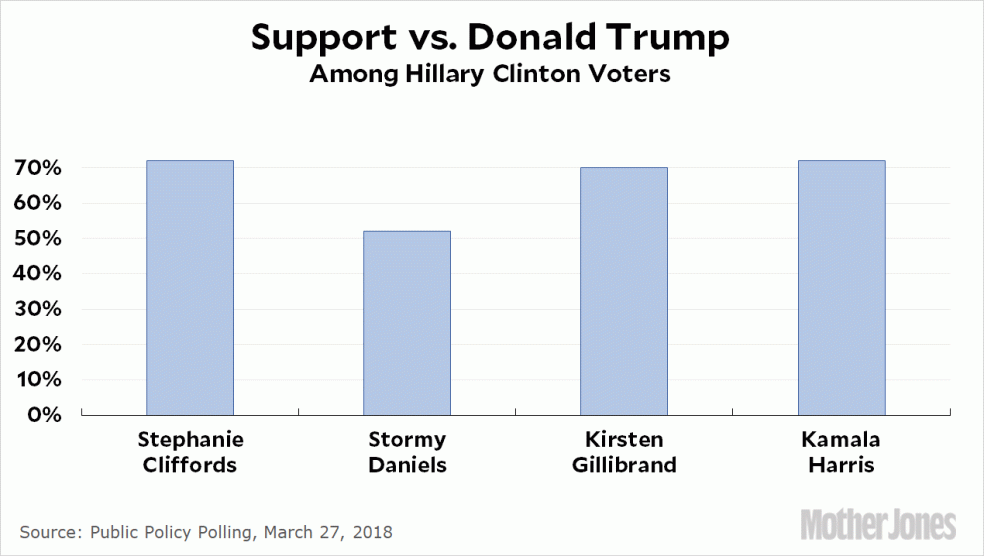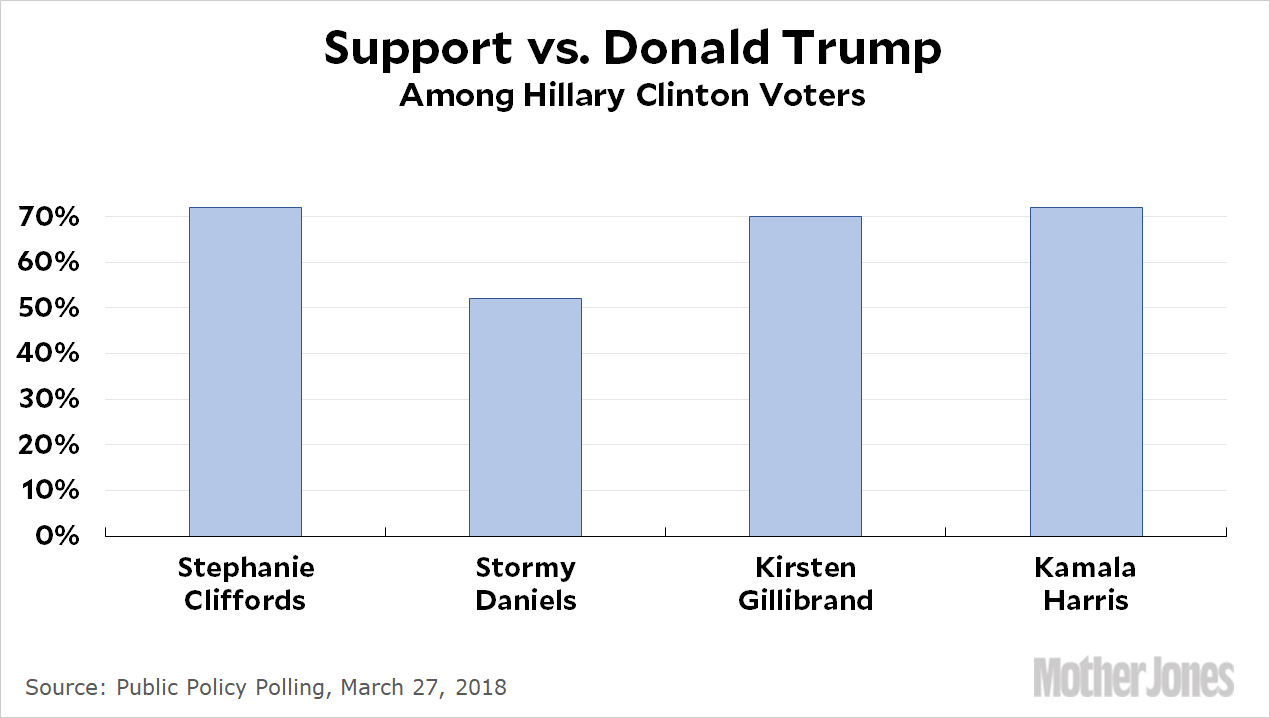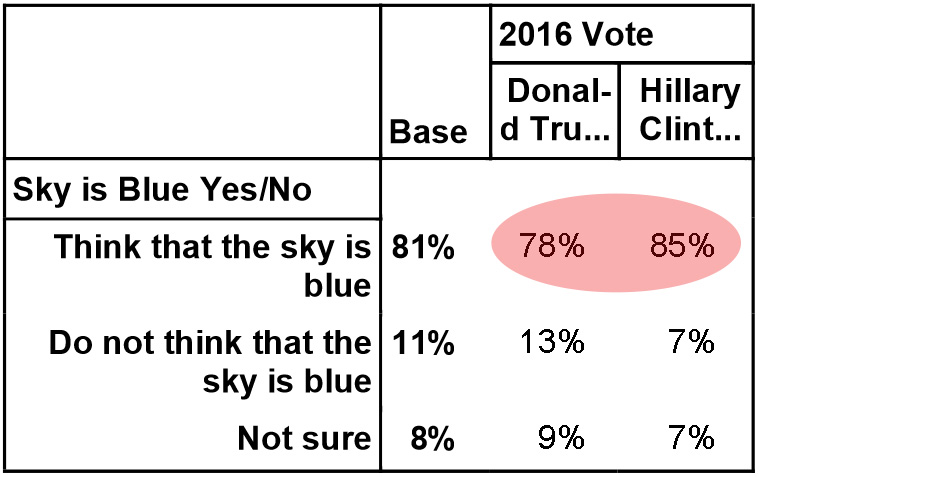
Public Policy Polling is well known for its periodic inclusion of off-the-wall survey questions. In its March national poll, for example, they asked whether Joe Biden could whup Donald Trump in a fistfight. (Answer: Democrats chose Biden and Republicans chose Trump.) But they also ask some questions that seem kind of batty at first glance but actually reveal something interesting. For example, here’s a question about the level of support for various candidates in a 2020 campaign against Trump:

There are two interesting things here. First, a lot of Democrats obviously have no idea who Stephanie Cliffords is (it’s Stormy Daniels’ real name) but would vote for her anyway. Second, Gillibrand and Harris are supported at the same rate. What this demonstrates is something that we all know: polling candidates this far ahead of the election is dumb. It’s based on nothing but name recognition and is essentially meaningless, something that this poll question demonstrates viscerally. Then there’s this:

This seems weird: Why would Trump supporters be less likely to think the sky is blue? Especially since they’re more likely to live in rural and suburban areas, where the sky really is blue? I can think of a few possibilities, but the real answer is probably that there’s no difference at all. Despite the official 3 percent margin of error, polls really have much higher margins of error. That 3 percent is just the statistical error, but there’s also error from bad sample design, question wording, question order, and a bunch of other stuff. A question like this brings the real margin of error to life.















